Linear interval arithmetic and Hansen's linear interval arithmetic share a common motivation. Hansen's linear interval arithmetic is, however, a closer relative of the derivative-based methods.
In ![]() , each interval is represented
as a sampled value v, and a slope d:
, each interval is represented
as a sampled value v, and a slope d:
![]()
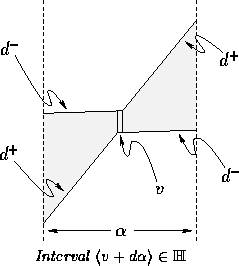
Bounds produced using Hansen's linear interval arithmetic
are generally superior to bounds produced using
a derivative-based method, as the relationship(s)
between the free variable(s) and derivative(s)
may be taken into account, as with linear interval
arithmetic.
An example evaluation is appropriate; let us bound
the range of g(x) for ![]() , by evaluating
g([0,1]). Let
, by evaluating
g([0,1]). Let ![]() ;
with Hansen's linear interval arithmetic,
;
with Hansen's linear interval arithmetic,
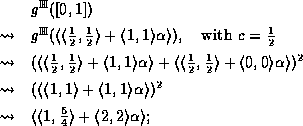
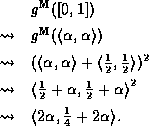
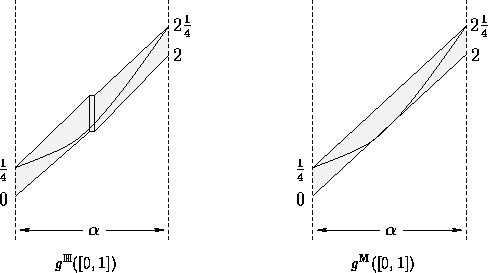


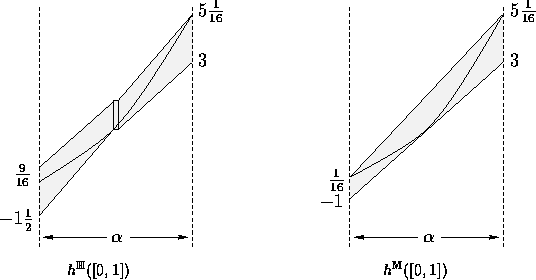
![]()
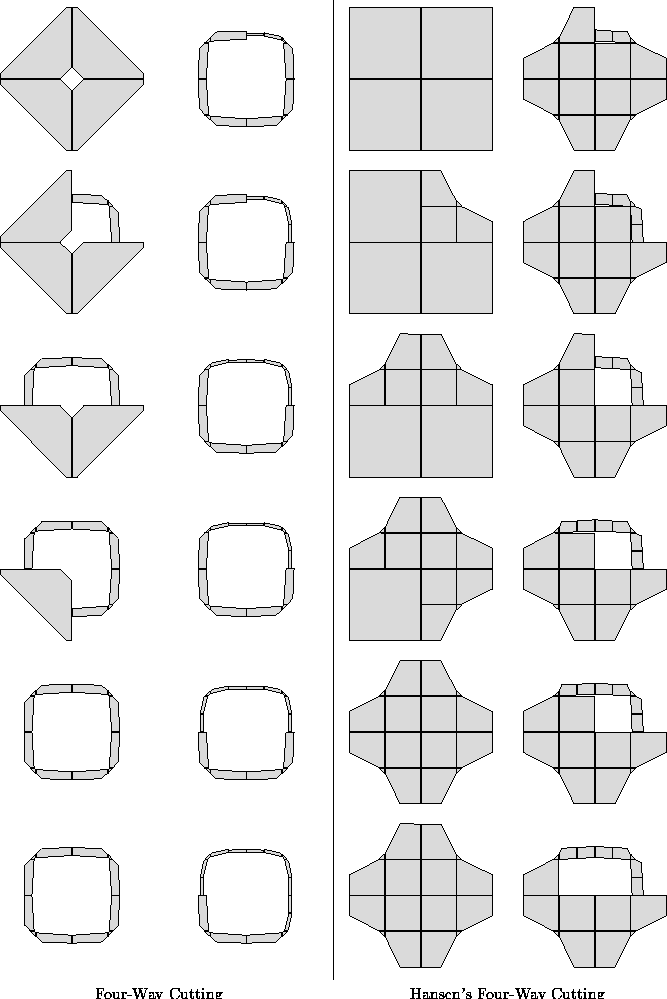
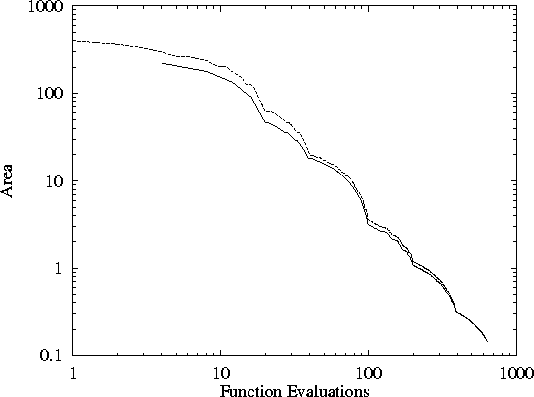
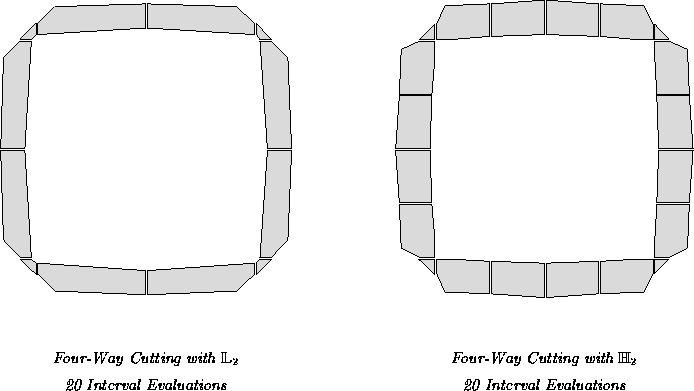
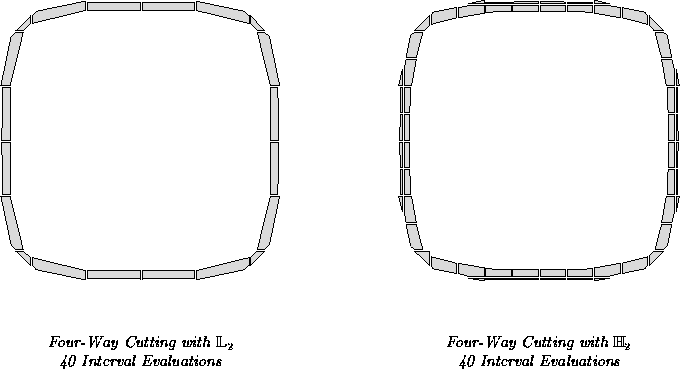
Hansen's linear interval arithmetic ![]() and our linear interval arithmetic
and our linear interval arithmetic ![]() perform a similar amount of work computing
bounds for any given operator.
Consider the operator
perform a similar amount of work computing
bounds for any given operator.
Consider the operator ![]() ,
which has the following evaluation rule:
,
which has the following evaluation rule:
![]()
![]()


It is not completely clear why Hansen
chose to evaluate ![]() using
using
![]()
![]()
![]()
With either approach, fewer floating-point operations may be used to compute bounds, if looser bounds are acceptable. Derivative methods are easily implemented and produce slightly larger bounds at a slightly higher evaluation cost. The efficiency graphs illustrate that each approach differs, in computational efficiency, by a constant factor.
With a modern language, such as C++, Hansen's intervals may be built using an underlying interval arithmetic class. Our methods may be modularly constructed by using an underlying linear bound class, which observes the current rounding mode.
It is unreasonable to expect a common optimizing compiler to produce code comparable to a direct implementation, as symbolic reasoning is employed when producing an efficient implementation. The author advocates the implementation of a program which employs sophisticated symbolic reasoning to automatically produce ``direct'' implementations, for any of a variety of interval arithmetics. Such a program would be given a description of an operator's properties, and produce a code fragment which implements the corresponding interval operator. Such routines may be folded into an optimizing compiler, but it is unclear what algorithms would benefit, other than interval arithmetic classes.
The chief advantage of our approach to generalized interval arithmetic is its mathematical simplicity, which allows for properties to be naturally tracked. This simplicity also provides for a superior handling of discontinuous functions, and multi-functions.
The chief advantage of Hansen's approach is that
![]() is easily implemented, given an
implementation of
is easily implemented, given an
implementation of ![]() . Of course,
. Of course,
![]() is implemented with even less work.
With a naive implementation, both
is implemented with even less work.
With a naive implementation, both ![]() and
and ![]() return sub-optimal bounds.
Regardless, as j shrinks, the relative differences between
return sub-optimal bounds.
Regardless, as j shrinks, the relative differences between
![]() ,
,
![]() , and
, and ![]() approach zero. With effort, better bounds may be
returned, although this mitigates the cheif advantage
of the two methods.
approach zero. With effort, better bounds may be
returned, although this mitigates the cheif advantage
of the two methods.
Our generalized interval arithmetic may be implemented using Hansen's methods, or using derivative-based methods. Temporary recourse to the methods outlined in this thesis is possible when considering non-differentiable operators.
Finally, it should be noted that with several minor
changes to Hansen's fundamental definition of intervals,
we may produce our fundamental definition of intervals.
With ![]() , and
, and ![]() , this proceeds
as follows: for an interval
, this proceeds
as follows: for an interval ![]() ,
let
,
let ![]() vary from 0 to 1, rather than from -c to c;
let b be a member of
vary from 0 to 1, rather than from -c to c;
let b be a member of ![]() , rather than a
member of
, rather than a
member of ![]() .
.
| Jeff Tupper | March 1996 |